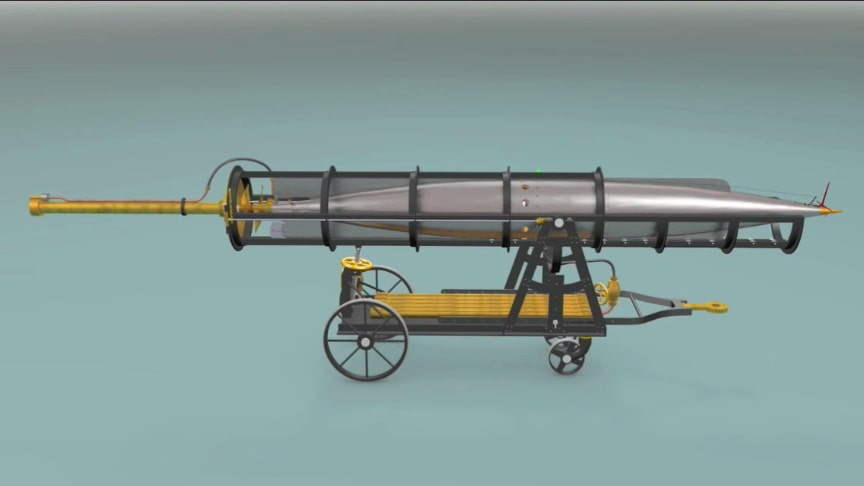Animation of 16 inch torpedo, Whitehead design, built by the Royal Laboratories in about 1876. This is an expanded version of an earlier YouTube video, showing more details of how it worked. The torpedo had a warhead of 117 lbs (52.5 Kg) wet guncotton, a compressed air compound oscillating engine giving a speed of 9 knots and a range of 1,200 yards (1.1 Km).
source/image(PrtSc): vbbsmyt
The animation shows the deck launch carriage that was used when HMS SHAH fired a 16 inch torpedo at the Peruvian armoured turret ship Huascar in 1877. Whitehead’s Secret method to keep a torpedo on depth. With the depth piston connected to the rudders, when deeper than set depth the depth rudders angle the nose up.
Only when the torpedo reaches set depth are the rudders amidships but the torpedo is still pointing upwards so it continues to go shallow until the depth rudders reverse. The torpedo therefore oscillates between deep and shallow. Whitehead’s Secret was to add a Pendulum which works against the depth piston.
Advertisement
So the depth piston reacts to the depth error, while the pendulum tries to keep the torpedo level. When deep, the depth piston dominates, so forcing the nose up, but as the torpedo approaches set depth, the Pendulum becomes dominant, and reduces or reverses the depth rudder until both pendulum and depth piston are at their mid/set positions. Nowadays we call this ‘negative feedback’.











